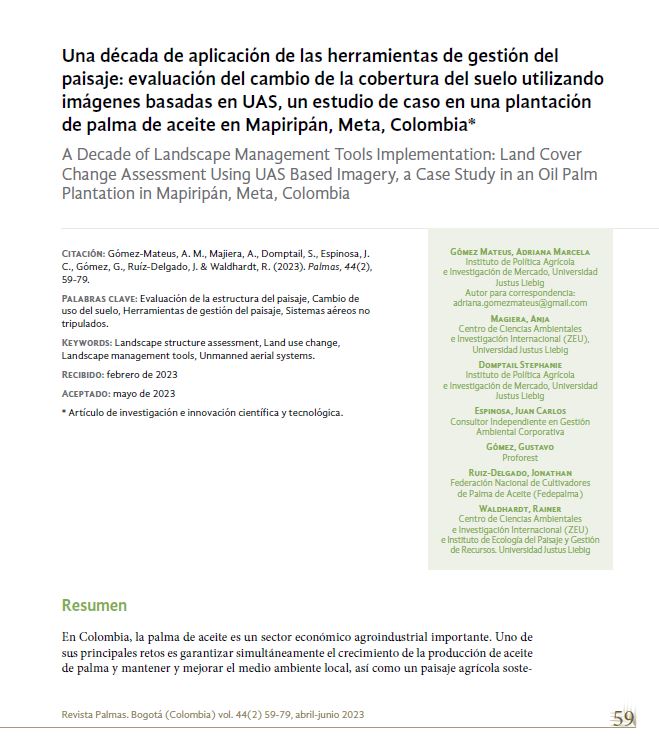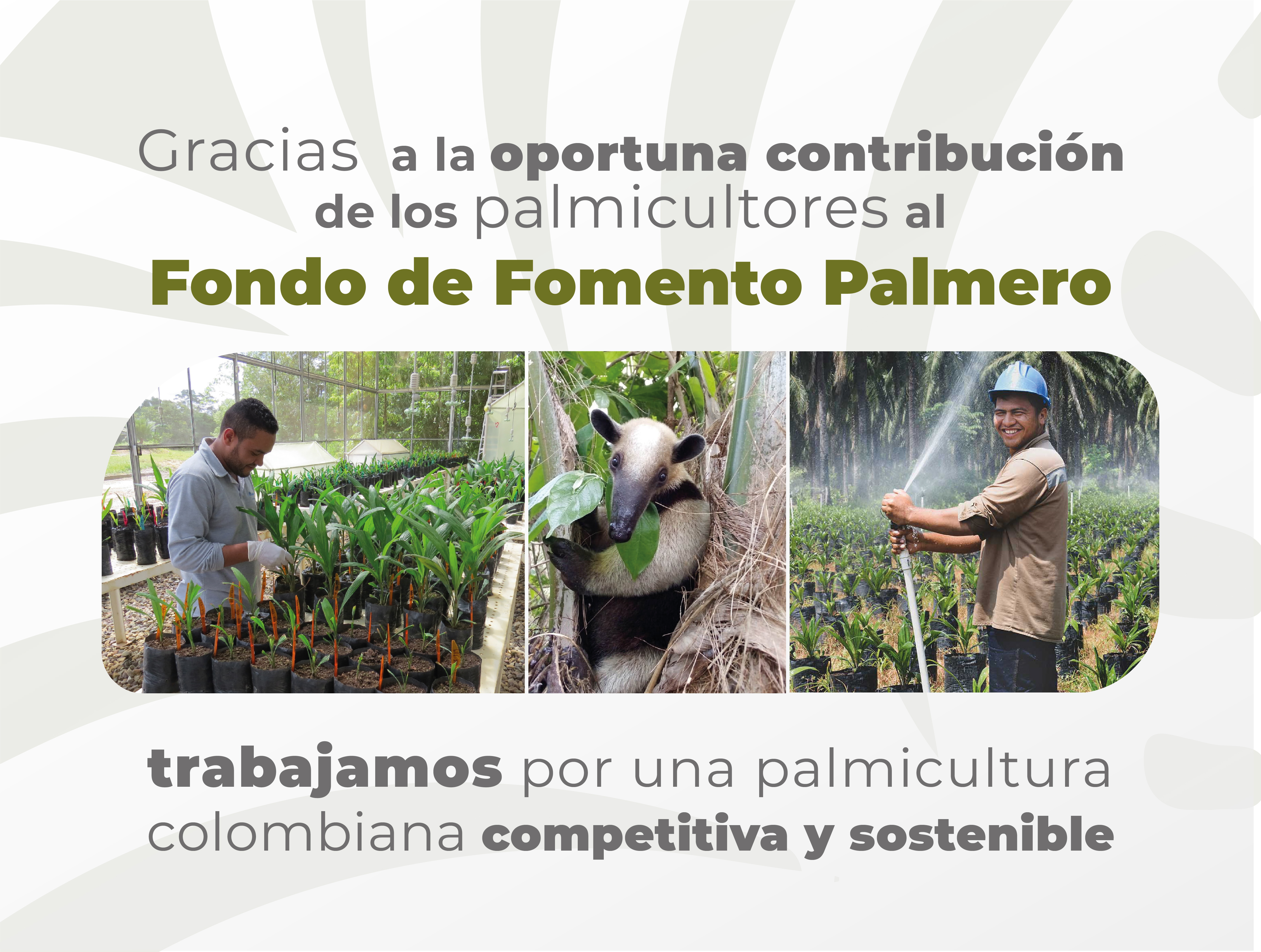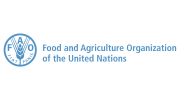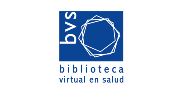Una década de aplicación de las herramientas de manejo del paisaje (hmp): evaluación del cambio de la cobertura del suelo utilizando imágenes basadas en UAS- un estudio de caso en una plantación de palma de aceite en Mapiripán, Meta, Colombia
Palabras clave:
Evaluación de la estructura del paisaje, Cambio del uso del suelo, Herramiental de gestión del paisaje, Sistemas aéreos no tripuladosResumen
En Colombia, la palma aceitera es un importante sector económico de la agroindustria. Los principales retos son garantizar el crecimiento de la producción de aceite de palma, y mantener el ambiente local y un paisaje agrícola sostenible. Realizamos un análisis del paisaje en una plantación ejemplar para evaluar la estructura del paisaje y el cambio de uso de la tierra entre 2009 y 2019. El estudio se realizó en la plantación Macondo, ubicada en Mapiripán, Meta. Primero, el mapa de coberturas se dividió en celdas de 500 por 500 metros. Segundo, aplicamos métricas de paisaje para la evaluación de la estructura del paisaje y calculamos un análisis de k-means. Las celdas se agruparon en nueve (9) grupos de similitud basados en la métrica del paisaje. Se seleccionaron cuatro (4) celda por grupo, en un total de 36, como muestra de la plantación. Se tomaron fotografías aéreas a una altura de 100 metros para crear las ortofotos en cada celda seleccionada. Las fotografías aéreas se tomaron utilizando sistemas aéreos no tripulados (UAS), en este caso, un dron DJI, para tomar más de 10.800 fotografías aéreas en 10 días. La fotografía aérea proporciona información detallada y actualizada sobre la cubierta terrestre y los cambios en el uso del suelo, lo que resulta esencial para el seguimiento y la toma de decisiones. Este análisis del paisaje permite a los gestores de las plantaciones supervisar el cambio de la cubierta terrestre y las herramientas de gestión del paisaje (LMT) aplicadas en la plantación.
Referencias bibliográficas
Agrawal, A., Wollenberg, E., & Persha, L. (2014). Governing agriculture-forest landscapes to achieve climate change mitigation. Global Environmental Change, 29, 270–280. https://doi.org/10.1016/j.gloenvcha.2014.10.001
Ardila, N. J. M., & García, U. G. M. (2010). Leyenda nacional de coberturas de la tierra: Metodología CORINE Land Cover adaptada para Colombia: Escala 1: 100.000. IDEAM.
Atkinson, J., & Bonser, S. P. (2020). “Active” and “passive” ecological restoration strategies in meta‐analysis. https://onlinelibrary.wiley.com/doi/abs/10.1111/rec.13229
Azhar, B., Lindenmayer, D. B., Wood, J., Fischer, J., Manning, A., McElhinny, C., & Zakaria, M. (2011). The conservation value of oil palm plantation estates, smallholdings and logged peat swamp forest for birds. Forest Ecology and Management, 262(12), 2306–2315. https://doi.org/10.1016/j.foreco.2011.08.026
Azhar, B., Lindenmayer, D. B., Wood, J., Fischer, J., Manning, A., McElhinny, C., & Zakaria, M. (2013). The influence of agricultural system, stand structural complexity and landscape context on foraging birds in oil palm landscapes. Ibis, 155(2), 297–312. https://doi.org/10.1111/ibi.12025
Azhar, B., Saadun, N., Puan, C. L., Kamarudin, N., Aziz, N., Nurhidayu, S., & Fischer, J. (2015). Promoting landscape heterogeneity to improve the biodiversity benefits of certified palm oil production: Evidence from Peninsular Malaysia. Global Ecology and Conservation, 3, 553–561. https://doi.org/10.1016/j.gecco.2015.02.009
Bastidas Pérez, S. (2013). Híbrido OxG Corpoica Elmira de palma de aceite, Avances en el desarrollo de materiales genéticos resistentes a la PC. Revista Palmas, 34(2), 135–141.
Bennett, A. F. (1999). Linkages in the landscape: The role of corridors and connectivity in wildlife conservation. Iucn.
Bianchi, F. J. J. A., Booij, C. J. H., & Tscharntke, T. (2006). Sustainable Pest Regulation in Agricultural Landscapes: A Review on Landscape Composition, Biodiversity and Natural Pest Control. Proceedings: Biological Sciences, 1595, 1715. edsjsr. https://doi.org/10.1098/rspb.2006.3530
Boons, F., & Mendoza, A. (2010). Constructing sustainable palm oil: How actors define sustainability. Journal of Cleaner Production, 18(16), 1686–1695. https://doi.org/10.1016/j.jclepro.2010.07.003
Borin, M., Passoni, M., Thiene, M., & Tempesta, T. (2010). Multiple functions of buffer strips in farming areas. European Journal of Agronomy, 32(1), 103–111. https://doi.org/10.1016/j.eja.2009.05.003
Bryson, M., Reid, A., Ramos, F., & Sukkarieh, S. (2019). Airborne vision-based mapping and classification of large farmland environments. Journal of Field Robotics, 27(5), 632–655. https://doi.org/10.1002/rob.20343
Caccetta, P., Collings, S., Devereux, A., Hingee, K., McFarlane, D., Traylen, A., Wu, X., & Zhou, Z.-S. (2016). Monitoring land surface and cover in urban and peri-urban environments using digital aerial photography. International Journal of Digital Earth, 9(5), 457–475. a9h.
Cenipalma, Fedepalma, & SENA. (2017). Centro de investgaciones en Palma de aceite, Federación Nacional de cultivadores de palma de aceites, SENA Centro nacional de aprendizaje. Mejores prácticas agroindustriales del cultivo de la palma de aceite en Colombia.
Conpes 3510. (2008). Documento Conpes 3510. Lineamientos de política para promover la producción sostenible de biocombustibles en Colombia.Consejo Nacional de Política Económica y Social (Conpes), República de Colombia, Departamento Nacional de Planeación (DNP).
Cramer, V. A., Hobbs, R. J., & Standish, R. J. (2008). What’s new about old fields? Land abandonment and ecosystem assembly. Trends in Ecology & Evolution, 23(2), 104–112. https://doi.org/10.1016/j.tree.2007.10.005
DNP. (2019). Departamento Nacional de Planeación. Plan de desarrollo Nacional 2018—2022. Pacto por Colombia, pacto por la equidad.
Duelli, P. (1997). Biodiversity evaluation in agricultural landscapes: An approach at two different scales. Agriculture, Ecosystems & Environment, 62(2), 81–91. https://doi.org/10.1016/S0167-8809(96)01143-7
Egan, J. F., & Mortensen, D. A. (2012). A comparison of land-sharing and land-sparing strategies for plant richness conservation in agricultural landscapes. Ecological Applications, 22(2), 459–471. https://doi.org/10.1890/11-0206.1
Espinosa, J. C., Gómez, R., Lozano, M., & Moreno, Y. (2018). Una mirada al Proyecto Paisaje Palmero Biodiverso.
Etter, A., Castiblanco, C., & Aide, T. M. (2013). Oil palm plantations in Colombia: A model of future expansion. ENVIRONMENTAL SCIENCE & POLICY, 27, 172–183. edswss.
Fagan, W. F., Fortin, M., & Soykan, C. (2003). Integrating Edge Detection and Dynamic Modeling in Quantitative Analyses of Ecological Boundaries. BioScience, 53(8), 730–738. https://doi.org/10.1641/0006-3568(2003)053[0730:IEDADM]2.0.CO;2
Fahrig, L., Baudry, J., Brotons, L., Burel, F. G., Crist, T. O., Fuller, R. J., Sirami, C., Siriwardena, G. M., & Martin, J.-L. (2011). Functional landscape heterogeneity and animal biodiversity in agricultural landscapes. Ecology Letters, 14(2), 101–112. https://doi.org/10.1111/j.1461-0248.2010.01559.x
Fortin, M. J., Olson, R. J., Ferson, S., Iverson, L., Hunsaker, C., Edwards, G., Levine, D., Butera, K., & Klemas, V. (2000). Issues related to the detection of boundaries. Landscape Ecology, 15(5), 453–466. https://doi.org/10.1023/A:1008194205292
Girón-Amaya, E. G., Silva Mora, A., Espinosa-Camacho, J. C., Ruíz-Delgado, J., Díaz-Florez, L. L., Castellanos-Díaz, C. A., Gil González, C. M., Uricoechea Percy, D., Arteaga Gómez, J. S., & Londoño Gutierrez, N. (2022). Federación Nacional de Cultivadores de Palma—Fedepalma. Anuario estadístico 2020. Principales cifras de la Agroindustria de la palma de aceite en Colombia 2017—2021. https://publicaciones.fedepalma.org/index.php/anuario/index
Gong, P., Biging, G. S., Lee, S. M., Mei, X., Sheng, Y., Pu, R., Xu, B., Schwarzr, K.-P., & Mostafa, M. (1999). Photo Ecometrics for Forest Inventory. Geographic Information Sciences, 5(1), 9–14. https://doi.org/10.1080/10824009909480508
González-Olarte, G., & Fadul-Escovar, T. (2014). Presencia de león montuno (Puma concolor) y las prácticas de conservación de su hábitat en un cultivo de palma de aceite sostenible en Mapiripán, Meta. Revista Palmas, 35(4), 31–37.
Gray, C. L., Simmons, B. I., Fayle, T. M., Mann, D. J., & Slade, E. M. (2016). Are riparian forest reserves sources of invertebrate biodiversity spillover and associated ecosystem functions in oil palm landscapes? Biological Conservation, 194(Supplement C), 176–183. https://doi.org/10.1016/j.biocon.2015.12.017
Gray, C. L., Slade, E. M., Mann, D. J., & Lewis, O. T. (2014). Do riparian reserves support dung beetle biodiversity and ecosystem services in oil palm-dominated tropical landscapes? Ecology & Evolution (20457758), 4(7), 1049–1060. a9h.
Green, R. E., Cornell, S. J., Scharlemann, J. P. W., & Balmford, A. (2005). Farming and the Fate of Wild Nature. Science, 307(5709), 550. https://doi.org/10.1126/science.1106049
Höbinger, T., Schindler, S., Wrbka, T., Seaman, B. S., & Weissenhofer, A. (2012). Impact of oil palm plantations on the structure of the agroforestry mosaic of La Gamba, southern Costa Rica: Potential implications for biodiversity. Agroforestry Systems, 85(3), 367–381. edselc. https://doi.org/10.1007/s10457-011-9425-0
International Union for Conservation of Nature (IUCN). (2018). Palm oil and biodiversity [Resource]. IUCN. https://www.iucn.org/resources/issues-brief/palm-oil-and-biodiversity
Khatun, R., Reza, M. I. H., Moniruzzaman, M., & Yaakob, Z. (2017). Sustainable oil palm industry: The possibilities. Renewable and Sustainable Energy Reviews, 76(Supplement C), 608–619. https://doi.org/10.1016/j.rser.2017.03.077
Koh, L. P. (2008a). Bird defend oil palm from herbivorous insects. Ecological Applications, 18(4), 821–825. 8gh.
Koh, L. P. (2008b). Can oil palm plantations be made more hospitable for forest butterflies and birds? Journal of Applied Ecology, 45, 1002–1009. 8gh. https://doi.org/10.1111/j.1365-2664.2008.01491.x
Lepš, J. (1987). Vegetation dynamics in early old field succession: A quantitative approach. Vegetatio, 72(2), 95–102. https://doi.org/10.1007/BF00044839
Lillesand, T., Kiefer, R. W., & Chipman, J. (2015). Remote sensing and image interpretation. John Wiley & Sons.
Lozano-Zambrano, F. (2009). Herramientas de manejo para la conservación de la biodiversidad en paisajes rurales (F. Lozano-Zambrano, Ed.). Instituto de Investigación de Recursos Biológicos Alexander von Humboldt y Corporación Autónoma Regional de Cundinamarca (CAR).
Lucey, J. M., Tawatao, N., Senior, M. J. M., Chey, V. K., Benedick, S., Hamer, K. C., Woodcock, P., Newton, R. J., Bottrell, S. H., & Hill, J. K. (2014). Tropical forest fragments contribute to species richness in adjacent oil palm plantations. Biological Conservation, 169(Supplement C), 268–276. https://doi.org/10.1016/j.biocon.2013.11.014
Maas, B., Clough, Y., Tscharntke, T., & Courchamp, F. (2018). Bats and birds increase crop yield in tropical agroforestry landscapes. Ecology Letters, 16(12), 1480–1487. https://doi.org/10.1111/ele.12194
Mba, O. I., Dumont, M.-J., & Ngadi, M. (2015). Palm oil: Processing, characterization and utilization in the food industry – A review. Food Bioscience, 10(Supplement C), 26–41. https://doi.org/10.1016/j.fbio.2015.01.003
Meijaard, E., Garcia-Ulloa, J., Sheil, D., Wich, S. A., Carlson, K. M., Juffe-Bignoli, D., & Brooks, T. M. (2018). Oil palm and biodiversity: A situation analysis by the IUCN Oil Palm Task Force. IUCN. https://doi.org/10.2305/IUCN.CH.2018.11.en
Mejía-Buitrago, A. (2016). Plan de Desarrollo “La fuerza del pueblo 2016—2019.”
Miccolis, A., Vasconcelos, S. S., Castellani, D. C., Kato, O. R., Carvalho, W. R. D., & Silva, A. C. D. (2014). Oil palm and agroforestry systems: Coupling yields with environmental services, an experiment in the Brazilian Amazon. Embrapa Amazônia Oriental-Resumo Em Anais de Congresso (ALICE).
Montes de Oca, A., Arreola, L., Flores, A., Sanchez, J., & Flores, G. (2018). Low-cost multispectral imaging system for crop monitoring. https://doi.org/10.1109/ICUAS.2018.8453426
Morgan, P. (2010). Towards a developmental theory of place attachment. Journal of Environmental Psychology, 30(1), 11–22. https://doi.org/10.1016/j.jenvp.2009.07.001
Najera, A., & Simonetti, J. A. (2010). Can oil palm plantations become bird friendly? Agroforestry Systems, 80(2), 203–209. https://doi.org/10.1007/s10457-010-9278-y
Nurdiansyah, F., Denmead, L. H., Clough, Y., Wiegand, K., & Tscharntke, T. (2016). Biological control in Indonesian oil palm potentially enhanced by landscape context. Agriculture Ecosystems & Environment, 232, 141–149. https://doi.org/10.1016/j.agee.2016.08.006
Ocampo-Penuela, N., Garcia-Ulloa, J., Ghazoul, J., & Etter, A. (2018). Quantifying impacts of oil palm expansion on Colombia’s threatened biodiversity. BIOLOGICAL CONSERVATION, 224, 117–121. edswsc. https://doi.org/10.1016/j.biocon.2018.05.024
Oosterveer, P. (2015). Promoting sustainable palm oil: Viewed from a global networks and flows perspective. Journal of Cleaner Production, 107, 146–153. https://doi.org/10.1016/j.jclepro.2014.01.019
Paine, D. P., & Kiser, J. D. (2003). Aerial photography and image interpretation. John Wiley & Sons.
Pardo, L. E., Campbell, M. J., Cove, M. V., Edwards, W., Clements, G. R., & Laurance, W. F. (2019). Land management strategies can increase oil palm plantation use by some terrestrial mammals in Colombia. Scientific Reports, 9(1), 7812. https://doi.org/10.1038/s41598-019-44288-y
Pardo-Vargas, L. E., & Payán-Garrido, E. (2015). Mamíferos de un agropaisaje de palma de aceite en las sabanas inundables de Orocué, Casanare, Colombia. Biota Colombiana, 16(1), 54–66.
Perfecto, I., & Vandermeer, J. (2010). The agroecological matrix as alternative to the land-sparing/agriculture intensification model. Proceedings of the National Academy of Sciences, 107(13), 5786.
Perfecto, I., & Vandermeer, J. (2012). Separation or integration of biodiversity conservation: The ideology behind the “land-sharing” versus “land-sparing” debate. Ecosistemas, 21(1/2), 180–191. CABDirect.
Qaim, M., Sibhatu, K. T., Siregar, H., & Grass, I. (2021). Environmental, Economic, and Social Consequences of the Oil Palm Boom. Annual Review of Resource Economics, 12(1), 321–344. https://doi.org/10.1146/annurev-resource-110119-024922
Qiu, J. (2019). Effects of Landscape Pattern on Pollination, Pest Control, Water Quality, Flood Regulation, and Cultural Ecosystem Services: A Literature Review and Future Research Prospects. Current Landscape Ecology Reports, 4(4), 113–124. https://doi.org/10.1007/s40823-019-00045-5
Rey, L., Gómez, P. L., Ayala, I. M., Delgado, W., & Rocha, P. J. (2004). Colecciones genéticas de palma de aceite Elaeis guineensis Jacq. Y elaeis oleífera (HBK) de Cenipalma: Características de importancia para el sector palmicultor. Revista Palmas, 25(especial), 39–48.
Rodríguez, D. A. (2010). Caracterizaciones biológicas en la Hacienda Macondo (Mapiripán, Meta). ORINOQUIA, 14, 18–27.
Schroth, G., da Fonseca, G., Harvey, C., Gascon, C., Vasconcelos, H., & Izac, A.-M. (2004). Introduction: The role of agroforestry in biodiversity conservation in tropical landscapes. In G. Schroth, G. A. B. da Fonseca, C. A. Harvey, C. Gascon, H. L. Vasconcelos, & A.-M. N. Izac (Eds.), Agroforestry and Biodiversity Conservation in Tropical Landscapes (pp. 1–12).
Stöcker, C., Nex, F., Koeva, M., & Gerke, M. (2017). Quality assessment of combined IMU/GNSS data for direct georeferencing in the context of UAV-based mapping. ISPRS - International Archives of the Photogrammetry, Remote Sensing and Spatial Information Sciences, XLII-2/W6, 355–361. https://doi.org/10.5194/isprs-archives-XLII-2-W6-355-2017
Teuscher, M., Vorlaufer, M., Wollni, M., Brose, U., Mulyani, Y., & Clough, Y. (2015). Trade-offs between bird diversity and abundance, yields and revenue in smallholder oil palm plantations in Sumatra, Indonesia. Biological Conservation, 186, 306–318. a9h.
Thomson, A. G., Manchester, S. J., Swetnam, R. D., Smith, G. M., Wadsworth, R. A., Petit, S., & Gerard, F. F. (2007). The use of digital aerial photography and CORINE‐derived methodology for monitoring recent and historic changes in land cover near UK Natura 2000 sites for the BIOPRESS project. International Journal of Remote Sensing, 28(23), 5397–5426. https://doi.org/10.1080/01431160601105868
Torres, D. A. R. (2010). Caracterizaciones biológicas en la Hacienda Macondo (Mapiripán, Meta). Orinoquia, 14(2 sup), 18–27.
Tscharntke, T., Bommarco, R., Clough, Y., Crist, T. O., Kleijn, D., Rand, T. A., Tylianakis, J. M., Nouhuys, S. van, & Vidal, S. (2007). Reprint of “Conservation biological control and enemy diversity on a landscape scale.” Biological Control, 45(2), 238–253. https://doi.org/10.1016/S1049-9644(08)00082-0
Unidad de Planificación Rural (UPRA). (2018). Metodología para la identificació general de la frontera agrícola en Colombia.
Veneklaas, E. J., Fajardo, A., Obregon†, S., & Lozano, J. (2005). Gallery forest types and their environmental correlates in a Colombian savanna landscape. Ecography, 28(2), 236–252. https://doi.org/10.1111/j.0906-7590.2005.03934.x
Vijay, V., Pimm, S. L., Jenkins, C. N., & Smith, S. J. (2016). The Impacts of Oil Palm on Recent Deforestation and Biodiversity Loss. PLOS ONE, 11(7), e0159668. https://doi.org/10.1371/journal.pone.0159668
Cómo citar
Descargas

Publicado
Número
Sección
Licencia
Derechos de autor 2023 Palmas

Esta obra está bajo una licencia internacional Creative Commons Atribución-NoComercial-SinDerivadas 4.0.














